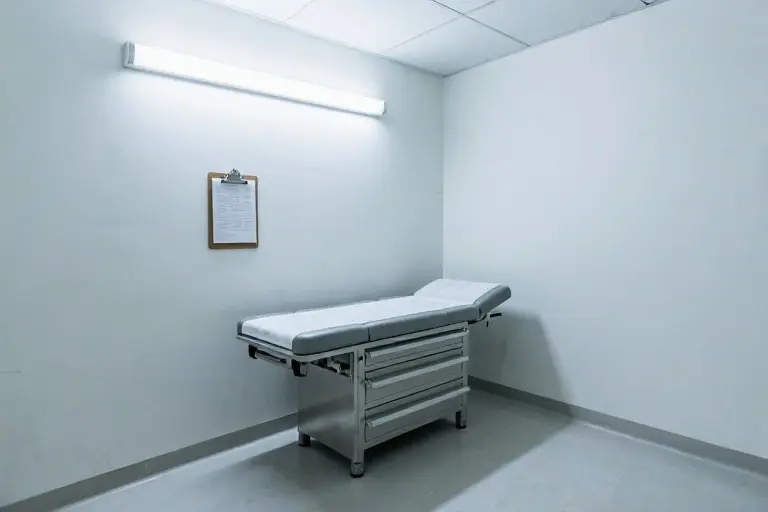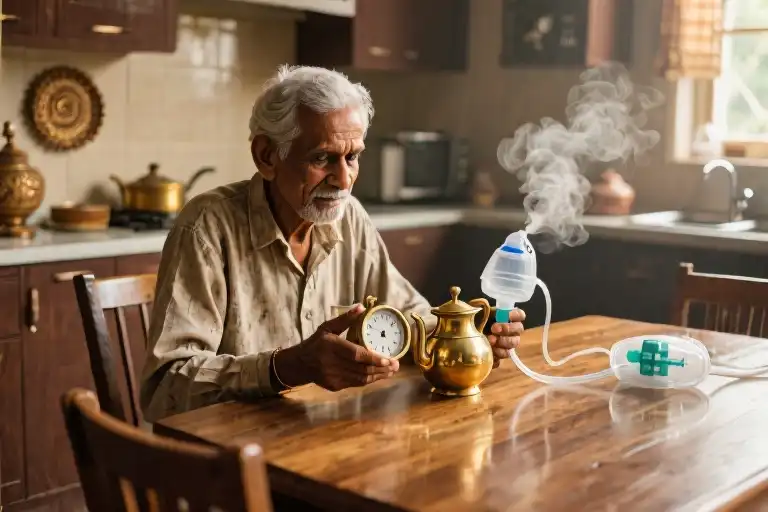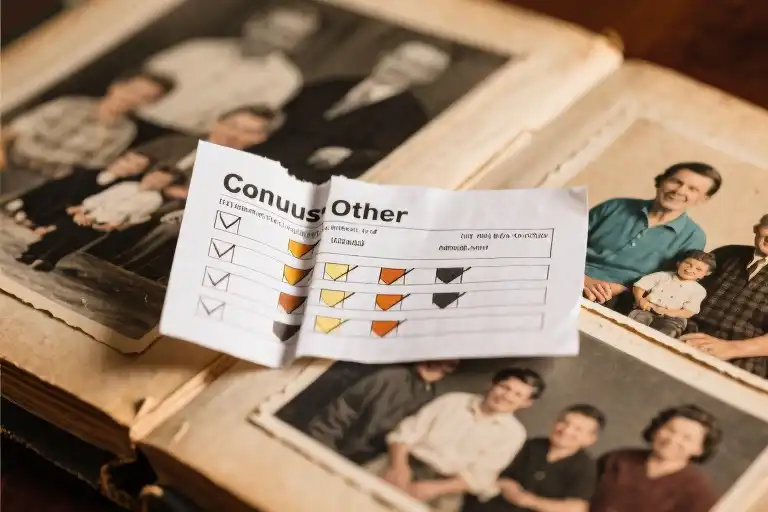The white-tiled room smelled of antiseptic and dread. Ten of us stood shivering in that London clinic, our bare feet sticking slightly to the frosty floor, genitals retreating from the cold like startled baby birds. This wasn’t some avant-garde performance art piece – just another Tuesday morning at the U.S. immigration medical exam, where bureaucratic requirements meet medieval examination practices in the most undignified of unions.
That popsicl stick moment when the doctor lifted my scrotum with all the enthusiasm of someone handling raw chicken at a supermarket meat counter – his nostrils flaring in poorly concealed disgust – perfectly encapsulated the absurd power dynamic at play. Here we were, educated professionals voluntarily subjecting ourselves to this humiliation for the privilege of chasing the American dream. The clipboard-wielding medic might as well have been checking cattle at auction.
What stays with me isn’t the physical discomfort (though the memory of that wooden spatula still makes me cross my legs reflexively), but the surreal realization that in 2023, the U.S. government still considers this voyeuristic inspection necessary for public health protection. Never mind that modern medicine developed DNA tests for syphilis decades ago, or that Canadian immigration officials manage to screen newcomers without conducting a lineup of naked strangers.
This series will dissect the green card medical exam from three angles: my personal ordeal in that London examination room, the questionable medical justification for such invasive procedures, and practical strategies for maintaining some shred of dignity during the process. Because nobody should have to learn the hard way that ‘full physical examination’ in USCIS parlance translates to ‘prepare to feel like livestock.’
The Naked Truth: Inside the Green Card Medical Exam
The white tiles reflected our pale, shivering bodies back at us – a lineup of grown adults reduced to quivering specimens under fluorescent lights. I remember counting the cracks in the grout while waiting, trying not to notice how the cold made everything… retract. There were ten of us that morning, all clutching our paperwork like fig leaves, all trying not to make eye contact with the other naked strangers sharing this uniquely humiliating rite of passage.
The clinic had the cheerful sterility of a slaughterhouse. Somewhere between the disinfectant smell and the clipboard-wielding attendants, it became clear we weren’t patients here – we were inventory. They called us by number, not name. My turn came with a brisk “Applicant 7” barked across the room, as if I’d been queuing for deli meats rather than submitting my body for governmental approval.
What followed was less medical examination than bizarre pantomime. The doctor – a man whose expression suggested he’d rather be anywhere else – approached with what looked like a popsicle stick. His technique was neither gentle nor particularly clinical. More like someone poking at suspicious leftovers in the fridge. Prod, frown, jot something down. Repeat. The whole interaction lasted maybe ninety seconds, but time has a way of stretching when you’re standing bare-assed in front of a stranger judging your nether regions.
What struck me afterward wasn’t the indignity (though there was plenty of that), but the sheer pointlessness of the exercise. In an age where we can detect diseases from saliva samples and sequence entire genomes from a drop of blood, why did immigration authorities need to eyeball my genitals like Victorian phrenologists? The doctor’s gloved hands moved with the disinterested efficiency of someone going through motions they’d performed a thousand times before, checking boxes on a form whose original purpose had been lost to bureaucratic inertia.
Between applicants, I watched him sanitize the little wooden stick – that detail stuck with me. The ritual cleansing between each humiliation, as if the real contamination risk wasn’t germs, but the shared understanding of how degrading the whole process felt. We pretend medical settings neutralize nudity, but the red ears and averted gazes told a different story. Even the nurse handing out gowns avoided looking directly at anyone, her practiced cheerfulness barely covering what we all knew: this wasn’t healthcare, this was power wearing a lab coat.
They never did explain what they were looking for. The forms just listed “physical examination – complete” like that explained the cold hands and colder stares. Maybe that’s the real test – not whether you’re healthy enough for America, but whether you’re compliant enough to strip without complaint when ordered. I passed, obviously. We all did. But walking back to the changing area, goosebumped and oddly violated, I couldn’t shake the feeling that something far less visible than my anatomy had been examined in that white-tiled room.
The Medical Theater of Immigration
The clinical white tiles reflected our collective discomfort as we stood in that London examination room, ten strangers united only by our shared vulnerability and the absurdity of the situation. The popsicle stick prodding felt less like a medical necessity and more like a ritual humiliation – one that left me wondering whether this was truly about public health or simply a bureaucratic tradition masquerading as science.
Modern medicine has blood tests that can detect syphilis with 99% accuracy. Urine samples reveal chlamydia infections. Yet here we were, subjected to what felt like a Victorian-era inspection, our bodies treated as suspicious objects rather than human beings. The CDC’s Technical Instructions for Civil Surgeons mention ‘physical examination’ in the most clinical terms possible, but nowhere do they explain why visual inspection remains mandatory when superior diagnostic tools exist.
I later learned from Dr. Eleanor Weston, an infectious disease specialist at Johns Hopkins, that visual genital exams for syphilis detection have a false negative rate approaching 40% in early-stage infections. ‘We stopped relying on chancre identification in standard practice decades ago,’ she told me. ‘The blood RPR test gives us definitive results without compromising patient dignity.’ This revelation made the entire experience feel even more perplexing – why persist with an outdated method that’s both less effective and more invasive?
The answer, it turns out, lies in the dusty archives of immigration history. These examinations descend directly from the 1891 U.S. Immigration Act’s provisions for ‘excluding persons with loathsome or dangerous contagious diseases.’ Ellis Island doctors would line up steerage passengers for quick visual inspections, marking suspicious cases with chalk. While we’ve thankfully abandoned the chalk marks, the underlying assumption remains: that immigrant bodies require special scrutiny, that our potential to carry disease justifies extraordinary intrusion.
What’s particularly striking is how this contrasts with other nations’ approaches. Canada’s immigration medical exam focuses on chest x-rays for tuberculosis and blood tests for syphilis. Australia requires HIV testing but specifies that genital exams should only occur when ‘clinically indicated.’ The UK eliminated routine genital inspections entirely in 2013 after determining they provided no meaningful diagnostic benefit. Yet in America, the ritual persists, unchanged in its essentials for over a century.
Perhaps most telling is the language discrepancy in official documents. While the CDC’s public-facing materials emphasize ‘respect for examinee privacy and comfort,’ the Technical Instructions for panel physicians contain blunt directives like ‘the external genitalia must be visualized.’ This gap between polite fiction and operational reality mirrors the broader immigrant experience – we’re told we’re welcome, then subjected to procedures that feel designed to remind us of our provisional status.
The medical necessity argument collapses under scrutiny, leaving us with uncomfortable questions about what these exams truly accomplish. Are they public health measures, or unspoken tests of compliance? Lessons in bureaucratic submission? The answer likely contains elements of all three – a reminder that immigration has always been as much about power as about people, with medicine serving as its sometimes unwitting accomplice.
The Anti-Humiliation Field Manual
The moment you step into that sterile examination room, the power dynamics become painfully clear. But here’s the secret they don’t put in the USCIS medical requirements handbook – you have more control than you think. Having survived the great scrotum inspection of 2018, I’ve compiled these battle-tested strategies for maintaining dignity during your green card medical exam.
Strategic Preparation
Clothing matters more than you’d expect. Wear separates – button-down shirts and elastic-waist pants become your best friends when quick disrobing is required. One applicant showed up in a romper and spent fifteen minutes wrestling with it while the doctor tapped their foot. Pro tip: slip-on shoes eliminate awkward hopping during wardrobe changes.
Timing your appointment requires military precision. Schedule as the first patient after lunch – doctors tend to rush through afternoon sessions. Avoid Mondays (backlog from weekend emergencies) and Fridays (staff mentally checked out). One immigration lawyer swears by 10:43 AM slots when clinic rhythms hit their efficiency peak.
In-The-Trenches Tactics
That popsicle stick moment doesn’t have to play out like a bad medical drama. You retain the right to:
- Request a chaperone (they’ll provide a nurse, though she’ll likely stare at the wall with practiced indifference)
- Ask for anatomical terminology instead of colloquialisms (“Please lift your testes” sounds marginally better than “Grab your junk”)
- Insist on draping (they keep those paper blankets around for reasons beyond decoration)
When the doctor reaches for the wooden spatula, try this script: “Before we proceed, could you explain the clinical necessity of this examination method compared to blood tests?” It won’t get you out of the inspection, but might speed up the process as they rush to check your “difficult patient” box.
Post-Game Recovery
Should things go truly sideways – say, a particularly enthusiastic hernia check left you singing soprano – know your recourse options. The magic phrase is “I’d like to file a Form I-290B.” This starts a 30-day appeal window during which USCIS must review your complaint about civil surgeon misconduct.
Your complaint letter should include:
- Exact time/date/location (check that clinic wall clock when you enter)
- Specific procedure details (“Dr. X performed testicular palpation for 47 seconds longer than standard protocol”)
- Witness names (that bored nurse suddenly becomes important)
- Requested resolution (retake exam with different provider at government expense)
Remember, these civil surgeons rely on USCIS approval to maintain their lucrative immigration exam monopolies. A well-documented complaint threatens their cash cow more effectively than any Yelp review.
One final piece of armor: the CDC’s Technical Instructions for Civil Surgeons contains loopholes even most doctors don’t know. Section 4.3-C vaguely states “visual inspection may be supplemented by laboratory tests.” Push for that supplement – it’s your best chance to replace medieval examination theater with modern science.
As I stood in that London clinic years ago, I wish someone had told me these secrets. The system counts on your ignorance and discomfort. Now you’re armed with better weapons than a paper gown.
The Unspoken Filter Behind Medical Exams
The cold metal table against bare skin. The clipboard that never records your discomfort. The way the stethoscope feels like a lie detector test. These aren’t just medical procedures – they’re border control in disguise, a bureaucratic hazing ritual dressed in white coats.
When I stood in that London clinic with other green card applicants, our nakedness served a purpose beyond medical necessity. The system wasn’t just checking for diseases; it was testing our willingness to surrender dignity at its command. Immigration medical exams function as the first obedience trial, where compliance matters more than health results.
Consider the absurd specifics: Ten grown adults shivering in formation while a stranger prods genitals with what looks like a craft stick. The exam checks boxes that haven’t changed since Ellis Island inspections, back when officials believed they could spot ‘moral defects’ through physical characteristics. Modern medicine has blood tests and imaging technology, yet we preserve these medieval inspections because they reinforce power dynamics.
This theater of humiliation serves three unstated purposes:
First, it establishes hierarchy before you even cross the border. By enduring invasive checks without protest, you demonstrate acceptance of your place in the new social order. The message echoes clearly: Your body belongs to the system now.
Second, it creates artificial scarcity. Not everyone can stomach such violations – some applicants withdraw rather than submit to degrading exams. The system thus filters out those with strong boundaries before they consume immigration resources.
Third, it normalizes surveillance. Future citizens who’ve been catalogued and probed during medical exams may more readily accept other intrusions – workplace monitoring, financial disclosures, routine border searches.
But here’s what they don’t account for: The resentment that simmers beneath compliance. Every applicant remembers which official made them feel like livestock. These memories become the foundation stones of immigrant communities, passed down as cautionary tales about institutional power.
Your stories matter. We’re collecting firsthand accounts of immigration medical exams at dignityinprocessing.org – the unvarnished truths about what really happens behind clinic doors. Selected submissions will shape our advocacy for modernized procedures that prioritize both public health and human dignity.
For immediate support, contact the Migrant Medical Rights Network. Their multilingual hotline (posted in our resource section) guides applicants through every step of the process, including how to legally request alternative testing methods when available.
When we reframe these exams not as medical necessities but as political rituals, their true function comes into focus. They’re not about protecting public health – they’re about maintaining control. And once you see that, you can start deciding exactly how much of yourself you’re willing to surrender at the clinic door.
The Aftermath: More Than Just Getting Dressed
The fluorescent lights still buzzed overhead as I fumbled with my buttons, fingers numb from cold and something else – that lingering sense of violation no amount of clothing could cover. Around me, ten other people performed the same quiet ritual of reassembling their dignity, each avoiding eye contact like we’d accidentally walked in on each other’s most vulnerable moments. Which, technically, we had.
They call it passing the medical exam. But what exactly had we passed? The scrutiny of strangers’ eyes and hands? The arbitrary benchmarks of a system that still treats human bodies like livestock in some sterile inspection line? My paperwork got stamped, but something else got stamped out that day – the naive belief that institutional processes always have rational explanations.
That QR code they give you at the end isn’t just for test results. It’s a silent initiation into understanding how power works when you’re the one without it. The real examination wasn’t of our physical health, but of our willingness to comply, to surrender privacy at the altar of bureaucracy. We stood there with our baby bird nads not because modern medicine required it, but because no one had ever stopped to question why century-old immigration rituals still dictate contemporary practice.
Maybe true health can’t be measured in a white-tiled room. Not the kind that matters – the health of systems, of power structures, of basic human respect. When the clinic doors swung shut behind me, London’s winter air never felt so clean.
Scan the code below if you want to know what rights you actually have during these examinations. Or don’t. Either way, you’ll never look at a popsicle stick the same way again.





